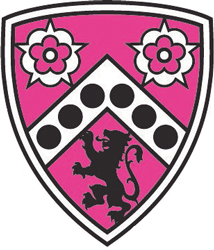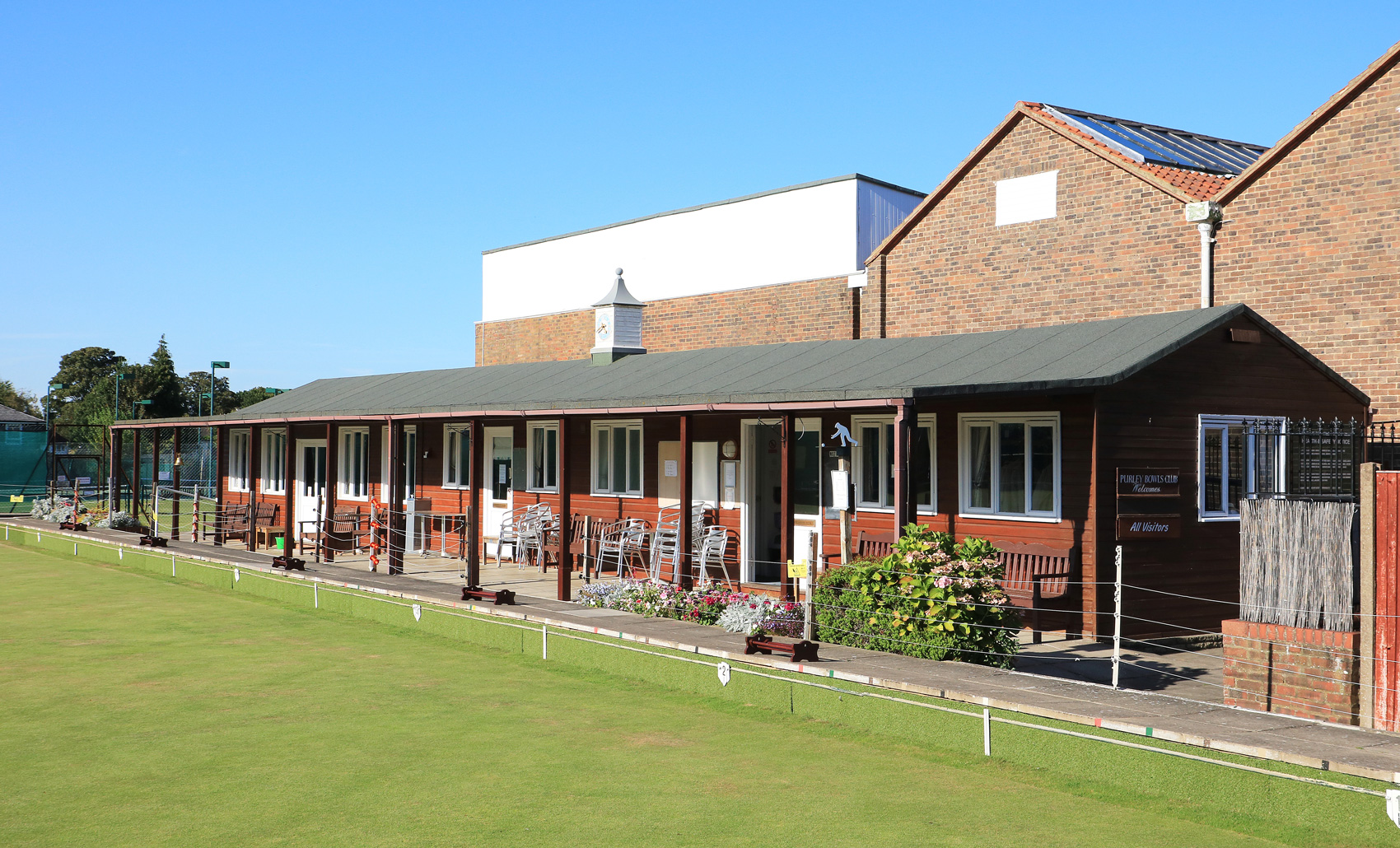

PURLEY BOWLS CLUB
CLUB HISTORY
PURLEY SPORTS CLUB
Purley Sports Club was first established in1904, by six gentlemen who met at the Lord Roberts on Woodcote Village Green.
They approached William Webb (creator of the Webb Estate) for permission to use the green for cricket. He refused as the green was public land and he feared children might be hit by cricket balls. After playing several football matches on the green they approached a local farmer, Edward Harrison of Great Woodcote Farm, and leased 8 acres in what is now known as The Ridge.
Purley Cricket Club Ltd was formed in 1905 and very quickly expanded to include tennis, bowls and croquet. The grand opening of the Sports Club pavilion was held in 1907. A local reporter described the scene: “It would be hard to imagine more picturesque surroundings and to wish for more commodious and better kept grounds than those enjoyed by the cricket and lawn tennis club, on the breezy heights of Woodcote”.-W.jpg?timestamp=1681396221403)
The Sports Club prospered, so much that in 1924 the original 8 acres, plus a further acre, were purchased.
Throughout World War II the Club was served by an emergency committee. In 1944, most of the club records were lost when the room in which they were stored was badly damaged by a flying bomb that hit No. 24 The Ridge, opposite the Sports Club.
PURLEY BOWLS CLUB
Because many records were destroyed in World War II, little is known about the early history of the Bowls Club.
Early Years 1905 - 1930
We do know Purley Cricket Club made the momentous decision in 1905 to lay a bowling green. It is rumoured that the great cricketer, W.G.Grace (who founded the Crystal Palace Indoor Bowling Club), was asked for his help, but this cannot be confirmed.
Although the early history of the club was lost, a report in the Croydon Advertiser in June 1921 mentioned the club, “ ... if one tired of cricket for a minute or two there was always the spectacle of mighty men and charming maidens qualifying for the Tennis Championships at Wimbledon and further afield one could watch the ancients at the more soothing game of bowls".
Minute books are available from 1921, the year that the club became affiliated to the Surrey County Bowling Association.
We know that the bowling green was returfed and substantially upgraded in 1924, when the Club bought the freehold of the land. One imagines that the green, before the First World War, had not been of the highest quality and that the war years had seen a deterioration. However, in 1924, work was undertaken to lay a good playing surface, and by 1927 the condition of the green was said to be the best for years.
It was very much a male preserve in those days, although in 1929 we know there was at least a plan to stage a ladies tournament.
The club played relatively few matches against other clubs, but members were prepared to travel considerable distances, as far afield as Chingford and Eastbourne. Alas, results were not very distinguished.
Club competitions were played for cash prizes. In the period 1922 to 1939, the prize fund was usually about £10. In 1922, for example, the singles championship winner took £2 10s and the runner-up £1 12s 6d.
A bowls "pavilion" was erected in 1924 at a cost of £45. It was otherwise described in the minute book as a "shelter".
On Saturday afternoons and Tuesday and Thursday evenings (so called club evenings), games were arranged for all members present. At all other times, members were free to arrange sides among themselves. 6th June 1 927 saw the first "spoon drive", a precursor of the competitions known today as "ballots".
Purley played the first match on the City of London Club's new green on Finsbury Circus, in the heart of the City. A contemporary report said that the rink was in charming surroundings but continued, "It is as yet in very poor condition and made us feel more than satisfied with our own ground". Purley lost by three shots.
1930 - 1951
In 1930, a levy of 7/6 was imposed on bowls members to fund weeding, levelling, forking, sanding the green and repainting and creosoting the pavilion. The bowls committee, pretty misogynistically, decreed that the weeds, mostly plantains, were to be removed by a woman, at a cost of 5/- per day.
But by 1937 the green was so dreadful again that many players left the club and the bowls section was in severe danger of folding. A letter was written by the secretary of the bowls section to Purley Cricket Club asking if a separate, independent bowls club might be formed, simply leasing the green from the Club. The purpose was to take the maintenance of the green, including the re-laying with Cumberland turf, under the control of the independent club. Extraordinarily, no further reference was made to this matter in bowls minutes, and one might suppose that in those uncertain times, there were suddenly more important things to consider than the state of a bowling green. No play took place, during wartime and afterwards, from 1940 to 1950 inclusive.
On 1st March 1951, an important meeting decided the future of the bowls club. There were eight members present and they resolved to try to revive the club. Limited play took place in 1951. We know that Ken Morton won the Sparenborg Cup, for the Championship. Ken Morton was obviously a fine bowler and he dominated the club competitions for several seasons. He won his Surrey badge in 1962.
1952 - 1978
At an EGM in 1952, it was agreed that a lady, accompanied by a member, be entitled to play on payment of a green fee. It was also in 1952 that the suggestion was made to have two-way play, the direction of play alternating weekly. However it was clear that only east-west play was possible, as there was then no banking (and presumably no ditch) on the northern side of the green at that time. Membership stood at fourteen.
However from 1952 onwards, the club saw a gradual upturn in its fortunes. Membership had risen to 47 in 1978.
John Elliott gained his Surrey badge in 1954 and was, we think, the first Purley bowler to achieve this honour. He made his debut, against Middlesex the following summer.
It was in 1956 that there was a move to form a Ladies’ bowls section. The bowls committee considered this suggestion to be of "such a revolutionary nature" that it should be decided by the members. On a postal vote, the idea was thrown out by thirteen to five. The subject was to return to the table twelve years later, in 1968, when the Club management committee was becoming anxious about the under-utilisation of the green. This time the members did not object and a Ladies’ section was supposed to open on 1st May 1968. A few ladies used the green, but felt they could not continue in the limited time slots offered by the men, and the idea lapsed again.
The 1970s were poor years for the club, with poor results in matches against other clubs and continued widespread criticism of the playing surface.
1978 - 2005
Then, in 1978, the Ladies section burst into life. Phyllis Sibley, Joan Martin and others were among thirteen ladies, who created the new section. They were clearly very energetic. A ladies changing room, with 24 lockers, was made available.
The story of the ladies bowls club has been remarkable. The ladies membership in 2000 had risen to 50. The playing standard, judged by its success on the green, is relatively stronger now than the men’s section. It would be impossible to imagine the bowls club now as a men-only institution.
In 1980, it was decided to have men’s and ladies' finals on the same day. From then onwards, Finals Day has been an important date in the bowls calendar.
It was in 1982, that players, in matches against other clubs, were required to wear the same club tie. Previously, there had been three Club ties in use in the Sports Club, and bowls settled on the predominantly black tie with pink and grey stripes, which is still in use today.
In 1987, the club applied to join the East Surrey (men’s) League and was turned down by the league committee. However, the following year the league invited the club to join, but on this occasion Purley declined! A few seasons later, Purley finally joined the league but, in competition, were "off the pace" for several years. Purley's record in the league improved year by year until, in 2004, the club were Champions for the first time. Our league status brought in some fine bowlers as well as generating some extra motivation among the existing membership.
Also in 1987, short mat got under way in the Sports Club function room and continues to be a popular sporting and social activity during the cold winter months.
In 1993, the first 'ballots' were introduced on Monday afternoons. The following year, 1994, the 'ballots' were extended to include Friday afternoons and Wednesday evenings.
In August 1998, an EGM decided to go ahead with the construction of a new pavilion. Its cost was budgeted at £62,000 and was funded entirely from bowls club fund-raising. The new pavilion was opened in 2000. It includes men's and women's changing rooms, a large club room and tea room, and toilets.
2004 saw our best season to date and a first for the club, when we came top of the East Surrey League, winning 11 matches and losing only one.
2005 - Today
Today the club is thriving and maintains a healthy membership. The social activities are many and varied. Annual tours in Britain and Portugal are very popular and well-supported. Fund-raising of all sorts has allowed the bowls club to continue to improve the environment of the green.
For the club’s Centenary season in 2005, the spectator area was paved and a new clock installed proudly over the new pavilion.
In 2011 a generous bequest from Geoffrey Bowler enabled the club to build a new a new visitors’ changing room, and in 2012 the paved seating in front of the pavilion was extended.
Purley continues to offer a warm welcome to new members and visiting players. It is one of the few bowls clubs in the area with a large membership list.
A detailed history of the bowls club, written by Derek Harvey (Captain 1998-99, 2004-5) was published for the Centenary, and fills many of the gaps left here.
Sources:
‘The Six Gentlemen' edited by John Hurle and published by Purley Sports Club 2005
‘Purley Bowls Club 1905-2005' written and published by Derek Harvey 2005
‘Village Histories - Purley' published by The Bourne Society 1996

SPONSORED BY MARSTON'S
Purley Bowls Club
The Ridge, Purley, Surrey CR8 3PF UK
Tel: (020) 8660 0608
Make a free website with Yola